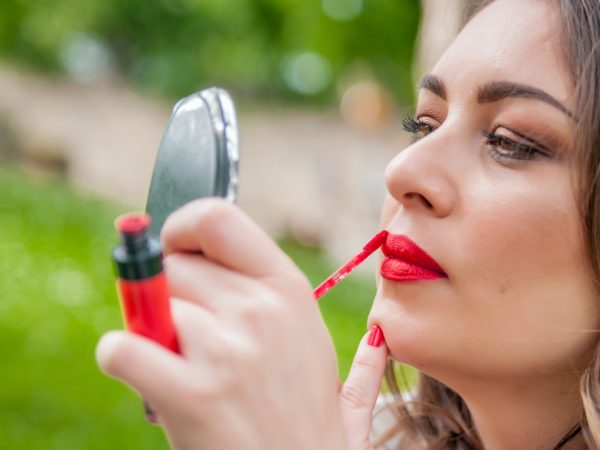True Amateur Model Guide – How to Build Your Portfolio and Get Noticed

Modeling is no longer an industry limited to professionals represented by big agencies. Today, many aspiring individuals begin their careers as true amateur models — passionate beginners taking their first steps into the exciting world of modeling. Social media, digital photography, and independent opportunities have opened doors for everyone to showcase their talent.
If you have always dreamed of becoming a model but do not know where to start, this guide is designed to help. It will walk you through everything you need to know to build your modeling portfolio, gain confidence, and attract the attention of agencies, photographers, and brands.
Understanding What a True Amateur Model Is
A true amateur model is someone who is starting their modeling journey without professional experience or agency representation. These individuals often begin by collaborating with local photographers, participating in small projects, or building their own social media presence to gain exposure.
Unlike professional models, amateur models usually work independently. They may not yet have a professional portfolio, but they are willing to learn, practice, and grow. What defines a true amateur model is passion, persistence, and the willingness to put in effort to reach higher levels of success.
The journey begins with self-awareness — understanding your strengths, body type, and the kind of modeling that fits your personality.
Finding Your Modeling Niche
The modeling world is incredibly diverse, and there are opportunities for everyone. Before you start, it is important to identify your niche — the type of modeling that best suits your look and interests.
Some popular modeling categories include:
- Fashion modeling for runway shows or editorial shoots.
- Commercial modeling for advertisements and product promotions.
- Fitness modeling for sports and wellness brands.
- Plus-size modeling representing body positivity and inclusivity.
- Parts modeling focusing on specific body parts like hands or feet.
Take time to explore what feels natural to you. Your niche will help guide your portfolio and attract the right kind of attention from photographers and agencies.
Building Confidence and Presentation Skills
Confidence is the foundation of modeling. Even as an amateur, you must learn how to carry yourself in front of a camera or audience. Practice posing in front of a mirror to understand your best angles. Study professional models to see how they express emotion, posture, and personality.
Consider taking basic modeling or acting classes to develop body awareness, expression, and communication skills. The more comfortable you are in your own skin, the more authentic and captivating your photos will be.
Confidence also extends to your online presence. Be proud of your work and share it with professionalism. Your attitude can make a lasting impression on industry professionals.
Creating a Strong Modeling Portfolio
Your portfolio is your most powerful tool as an amateur model. It showcases your range, versatility, and personality to potential clients and agencies. A strong portfolio does not require expensive equipment — it requires creativity and consistency.
Start by scheduling photoshoots with local photographers, preferably those experienced in working with beginners. Many photographers are open to TFP (Trade For Print) collaborations, where you both benefit from the experience and final images.
Your portfolio should include:
- Headshots with natural lighting and minimal makeup.
- Full-body shots to show proportions.
- Posed and candid shots showing different expressions and styles.
- Themed or fashion shots that reflect your niche.
Keep your portfolio updated as you grow. Quality is always more important than quantity, so choose only your best photos.
The Importance of Professionalism
Even as a true amateur model, professionalism will set you apart from others. Always show up on time, communicate clearly, and maintain a positive attitude during photoshoots or collaborations.
Respect photographers, stylists, and everyone involved in the creative process. The modeling industry values reliability and attitude just as much as appearance. Many professionals are willing to work with beginners who show dedication and a willingness to learn.
Building a good reputation early in your career can open doors to future projects and referrals.
Using Social Media to Get Noticed
In today’s digital world, social media is one of the most powerful tools for amateur models. Platforms like Instagram, TikTok, and Facebook allow you to share your work, connect with photographers, and build a following.
Here are a few tips to make the most of your online presence:
- Use a consistent username and bio that reflects your modeling identity.
- Post high-quality images regularly.
- Engage with your audience through stories and captions.
- Tag brands, photographers, and modeling agencies when relevant.
- Use hashtags strategically, such as #AmateurModel, #ModelLife, or #ModelPortfolio.
Consistency and authenticity are key. Do not be afraid to show your personality and behind-the-scenes moments. Many modeling opportunities today come from online visibility rather than traditional auditions.
Networking with Photographers and Agencies
Networking plays a crucial role in building your modeling career. Attend local fashion events, art shows, or photoshoots to meet professionals in the field. Introduce yourself with confidence and show interest in collaboration rather than immediate fame.
You can also reach out to photographers online. Look for those who specialize in model photography and have a style that matches your goals. Be polite and professional when contacting them — share your interest, availability, and modeling goals.
Once you have built a small portfolio, consider submitting your photos to local modeling agencies. Many agencies are open to discovering new talent, especially those who demonstrate commitment and professionalism.
Developing Your Personal Brand
Your personal brand is what defines you as a model and helps you stand out. It includes your style, the types of projects you take, and the message you communicate through your images.
Ask yourself what makes you unique. Do you have a signature look, a cause you care about, or a specific type of modeling that defines your identity?
Consistency across your photos, social media, and behavior helps create a recognizable personal brand. People remember models who have authenticity and purpose, not just good looks.
Building a personal brand also helps attract partnerships, sponsorships, and collaborations with brands that align with your image.
Avoiding Common Mistakes as an Amateur Model
Every beginner makes mistakes, but being aware of them can help you grow faster. Some common mistakes include:
- Rushing to get signed without understanding the industry.
- Working without contracts or clear communication with photographers.
- Comparing yourself to others instead of focusing on your progress.
- Neglecting professionalism by missing appointments or showing poor attitude.
- Posting low-quality or uncurated photos that harm your image.
Stay patient and focused. Every successful model started somewhere, and growth takes time. Treat each experience as a learning opportunity.
Taking the Next Step Toward Professional Modeling
Once you have built a portfolio, gained confidence, and established connections, you may want to take your modeling career to the next level.
Research reputable agencies in your area. Visit their websites to learn their submission process, and prepare a professional email with your best photos, measurements, and contact information.
Be cautious of fake agencies that ask for upfront fees or make unrealistic promises. Legitimate agencies earn through commissions, not initial payments.
If agency representation is not your goal, you can continue as an independent model by working directly with photographers and brands. Many successful models today build entire careers through self-promotion and social media.
Conclusion
Becoming a true amateur model is an exciting journey filled with creativity, growth, and self-discovery. You do not need to be perfect or professionally trained to start — all you need is confidence, persistence, and passion.
By identifying your niche, building a strong portfolio, and presenting yourself professionally, you can stand out in the competitive world of modeling. The key is to stay authentic, keep learning, and never stop believing in your potential.
Every model starts somewhere, and with the right mindset, you can turn your amateur beginnings into a rewarding and successful modeling career.
FAQs
1. Do I need professional photos to start as a true amateur model?
Not necessarily. You can begin with well-lit, clear photos taken by a local photographer or even a friend. As you gain experience, invest in professional shoots to enhance your portfolio.
2. How can I find photographers to work with as a beginner?
Search for local photographers on social media or photography forums. Many offer collaborations with amateur models to build their portfolios. Always check their previous work before scheduling a shoot.
3. What should I wear for my first photoshoot?
Wear simple, well-fitted clothing that highlights your natural features. Avoid heavy makeup or distracting patterns. The goal is to show your true look and versatility.
4. How long does it take to get noticed as an amateur model?
It varies. Some people attract attention quickly through social media, while others take months of steady effort. Consistency, networking, and professionalism make a big difference.
5. Can I be a successful model without an agency?
Yes. Many amateur models build careers independently using social media, collaborations, and personal branding. Agencies can help, but they are not the only path to success.
Also read: AeroGarden Promo Code – Save Big on Indoor Garden Kits











